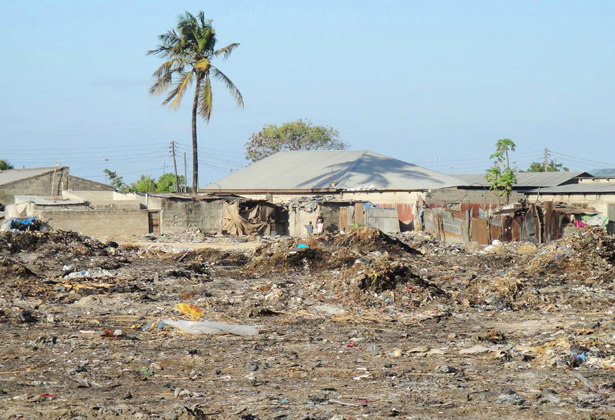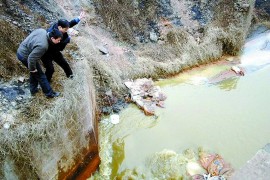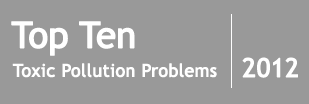Source #10
Dye Industry
Description
Dyes are used primarily in the production of consumer products, including paints, textiles, printing inks, paper, and plastics. They add color and patterns to materials. Natural dyes extracted from vegetables, fruit and flowers have been used since 3500 BC to color fabrics and other materials.[1] These dyes were replaced by chemical dyes that bond with the fabric, providing and retaining richer color throughout washing and exposure.[2]

Many different types of dyes consisting of varied chemical compounds are used in production, depending on the type of textile or product being dyed. There are more than 3600 different types of textiles dyes alone. Other dye types include acid dyes for coloring animal fibers, basic dyes for use on paper, direct dyes for use on cotton-wool or cotton-silk, and pigment dyes used in paint and inks.[3] These dyes are manufactured out of a number of different chemicals, but most notably, sulfuric acid, chromium, copper and other metallic elements are used. Dyes are mixed, synthesized in a reactor, filtered for impurities, dried out and then blended. Along the way many other additives, solvents and chemical compounds are used to instigate reactions.[4] The variation in chemical use is closely tied to the high demand for variable patterns and unique colors for clothing and other textiles.[5] These constantly evolving demands result in a highly fluctuating and diverse waste stream. The textile industry is one of the largest sectors globally and produces an astonishing 60 billion kilograms of fabric annually, using up to 9 trillion gallons of water.[6] This massive water use is a key component of pollution. Water is used as cooling water, to clean equipment, and for rinsing and processing dyes and products.
The dye industry is responsible for almost 50 sites in the Blacksmith Institute’s database, potentially putting more than one million people at risk. The majority of problematic dye industry sites are in South Asia, a global center of textile production; however the dye industry is global in scale and is spread over many different countries. Dye plants can range from small and informal to large and organized, in India for example there are estimated to be about 1,000 small-scale entities and 50 large industrial plants.[7] While the organized dye industry does dominate the market, there are many unorganized small-scale plants that disproportionately add to the problem of pollution.
Exposure Pathways
Wastewater is a key pathway for exposure. In legacy pollution sites wastewater from the dye industry is directly dumped into surface waters without treatment. Wastewater carries a host of different chemicals from the processing of dyes and The World Bank estimates that textile dyeing and treatment contribute up to 17-20 percent of total industrial water pollution. The majority of pollution exposure in the Blacksmith Institute’s database comes from ingestion of contaminated water and ingestion of food, which has been irrigated with contaminated water.
Top Pollutant(s)
The top pollutants by population at risk found in the Blacksmith Institute’s database are chromium, lead and cadmium. Other harmful pollutants include sulfur, nitrates, chlorine compounds, arsenic, mercury, nickel and cobalt. Chromium is a known carcinogen and lead produces neurological and developmental damage in children and cardiovascular disease in adults.
Global Burden of Disease
The dye industry is the lowest contributor to DALYs on the top ten list, contributing an estimated 400,000 DALYs to the total burden of disease in the 49 countries assessed. These DALYs are all a result of the health impacts from chromium and lead.
What is being done?
Projects are underway internationally to raise awareness about the pollution impacts of the dye industry. Preventative measures being implemented include reducing and recycling water in the process, substituting or minimizing the use of the most toxic chemicals, and providing education on the safe storage and treatment of waste. Remediation efforts include the use of activated carbon in the absorption of chemicals in waste from the dye process, which has shown to greatly reduce some of the pollutants in the waste.[8] Also, new technologies are being developed to reduce the massive amount of water use and control pollution. The trick is getting these potentially expensive new technologies to informal small-scale dye factories.
Blacksmith is currently partnering with local groups to bring some lower cost technologies and education to hotspots polluted by the dye industry. In 2008 Blacksmith assessed the city of Jodhpur, a city in India, which contains the biggest bloc of textile dyeing and printing industries. About 215 textile industries exist in Jodhpur, with a population of nearly 900,000. Blacksmith documented that various dyes were being used and considerable wastewater was discharged, degrading the water quality in this water-scarce region. Partnering with industries and local representatives, Blacksmith identified hotspots of dumping and active contamination. Bringing in a technical expert, Blacksmith held demonstration workshops to show how to use Bio-filters to remove heavy metals and chemicals from effluents. Filters were installed to remediate polluted water.
Footnotes:
[1] Kant, R. "Textile dyeing industry and environmental hazard." Natural Science. Vol 4. No.1 22-26. 2012.
[2] Ibid.
[3] "Dye Manufacturing". Pollution Prevent and Abatement Handbook. World Bank Group. 1998
[4] Ibid.
[5] Parvath, C. et al. "Environmental impacts of textile industries." Indian Textile Journal. November, 2009. Available at: http://www.indiantextilejournal.com/articles/FAdetails.asp?id=2420
[6]Zaffalon,V. "Climate Change, Carbon Mitigation and Textiles." Textile World. July/August 2010. Available at: http://www.textileworld.com/Articles/2010/July/July_August_issue/Features/Climate_Change_Carbon_Mitigation_In_Textiles.html
[7] Mangal, V.P. "The Future of Indian Dyes & Dye Intermediates". Textile Review. August 23, 2010. Available at: http://www.fibre2fashion.com/industry-article/29/2887/the-future-of-indian-dyes-and-dye-intermediates1.asp
[8] Kant, R. "Textile dyeing industry and environmental hazard." Natural Science. Vol 4. No.1 22-26. 2012.

-
Source #1
Battery Recycling
-
Source #2
Lead Smelting
-
Source #3
Mining and Ore Processing
-
Source #4
Tanneries
-
Source #5
Industrial/Municipal Dumpsites
-
Source #6
Industrial Estates
-
Source #7
Artisanal Gold Mining
-
Source #8
Product Manufacturing
-
Source #9
Chemical Manufacturing
-
Source #10
Dye Industry
-
The Remaining Five Sources



